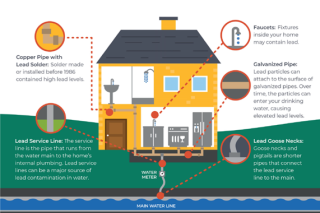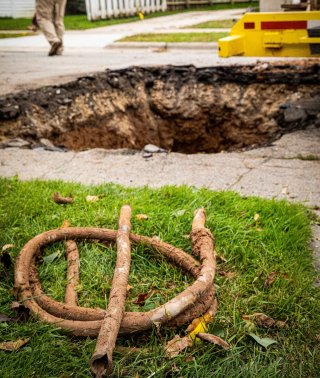Lead Service Line Technical Assistance in Support of the Bipartisan Infrastructure Law
- Technical Assistance for Lead Service Line Identification in Support of the Bipartisan Infrastructure Law
- Methods for Lead Service Line Identification
- Related Resources
Lead at any level can cause health concerns, especially for children. To protect public health, it is important for communities to understand where lead service lines are so they can prioritize them for removal and replacement. However, this is especially difficult for older neighborhoods where records are difficult to find or there might be a long history of repairs.
Knowing where a community may have lead service lines is critical to develop a replacement program. EPA researchers are providing technical assistance to communities to help identify where these lines are located.

Technical Assistance for Lead Service Line Identification in Support of the Bipartisan Infrastructure Law

To help advance the goal of removing lead service lines in the United States, EPA researchers in the Office of Research and Development (ORD) received funding as part of the Bipartisan Infrastructure Law (BIL) to support the development of strategies for lead service line identification. Researchers are working with multiple communities across the United States to provide technical assistance on the best approaches to identify lead service lines.
Technical assistance focuses on developing and accessing new identification methods, understanding how lead is released into drinking water from different types of pipes, and developing tools that help communities make strategic decisions for how to tackle lead service line identification and removal.
The results of this assistance are being used to develop best practices and tools that drinking water systems can use to minimize cost and improve their ability to identify and remove lead service lines more easily.
Learn more about ORD’s technical assistance in support of BIL.
Methods for Lead Service Line Identification
The first step to lead service line replacement is identification. EPA researchers are evaluating several methods that can identify lead service lines, including those in the Stepwise Lead Service Line Identification Approach.
Disclaimer: The Lead and Copper Rule Improvements (LCRI) has been finalized and the information presented on this webpage does not necessarily reflect those requirements going forward. EPA does not endorse one lead service line identification technique over another.
